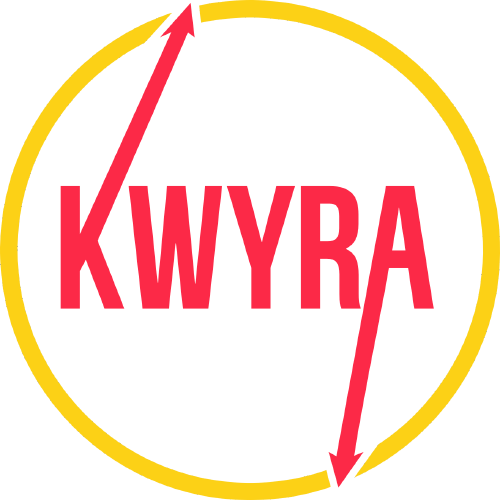
‘How do I live?’ This is the question each one of us asks when we are new to the world. A question we don’t even realise we are asking.
It’s what we want to know more than anything else.
‘How do I live?’
And we look out at the world to answer it. We look to the people around us, the people in charge, the people others are following to answer, ‘How do I live?’. So that we can learn how to live.
We do this so often that we don’t even realize we’re doing it. Watch this video and see how we look outwards to answer, ‘How do I live?’, and we’ll accept any crazy answer given just as long as it is popular enough:
How do I live? A question we are asking and having answered all the time by the temporary things around us. When the only true answer is what is always within us. pic.twitter.com/IIOX5UJ347
— kwyra (@KWYRA_NOW) August 26, 2023
For thousands of years the answer to ‘How do I live?’ would have come from those very near to you. Youd look to your family, your tribe, your village or town. They would tell you ‘this is your king’, ‘these are your gods’, and even ‘this is your enemy’. Once these big pieces of how to live were set then the details for would be filled out for you every day. In songs and stories, in prayers and flags, in warm hugs and angry warnings, in proud smiles and disappointed frowns. Everyday hundreds of tiny moments would add-up to create within you a certain perspective of the world. A perspective that would tell you what was right, what was wrong, what was important, and what was irrelevant. A perspective that would tell you how you should live.
So powerful was this training in ‘how to live’ that in some places, such as ancient Carthage (remember Hannibal and the elephants?), you would even sacrifice the life of your small children in rituals that placed your children’s lives as less important than a blessing from your god. In other places the local answer to ‘how to live’ led people to carve giant stone heads or build pyramids.
Local ideas of ‘how to live’ continued for tens of thousands of years. Perspectives, values and ideas passed slowly from person to person, generation to generation. The ideas of ‘how to live’ travelled only at the speed of the fastest sailing ship. This meant that the answer to ‘How do I live?’ was very stable. How to live changed very little, over decades, over generations, even over centuries. What was important now remained important for tens, hundreds, or even thousands of years.
Then writing and later printing were invented. Suddenly new perspectives, ideas and values could travel hundreds and even thousands of miles. New answers to ‘How do I live?’ could be shared amongst large groups of people with much less effort than before, and much faster.
These writings were first used by the people already in charge to reinforce the current answers for how to live. These current answers kept them in charge. Holy books were distributed, royal decrees were announced, and laws were posted.
As time went by however new writings began to emerge. Writings that shared new answers to the question ‘How do I live?’
For the first time in history, these new answers could be shared far and wide, changing perspectives and gathering support in ways that were impossible before. These new writings often challenged the existing answer to ‘How do I live?’. The new perspectives in they offered, led to the imagination of new possibilities for us, and the emergence of new values in the world. The answer to ‘How do I live?’ was no longer as stable as it had been for centuries. It was now open to question. These questions overturned traditions that had lasted for thousands of years. These questions led to the replacement of superstition with science, indentured slavery with individual freedom and kings with democracies. The answer to the question ‘How do I live?’ was transformed beyond anything our ancestors could imagine.
The new answers to ‘How do I live?’ allowed the world to industrialise. This industrialisation created a new powerful voice in societies. A voice that proposed a different answer to the question of ‘How do I live?’. This was the voice of mass media and the advertisers that paid for it. Mass media and advertisers promoted their answer to ‘How do I live?’ First in print, then cinema, then radio, and then television. In many places this voice became more powerful than existing rulers and priests. Mass media could even question rulers and priests in ways that would have been unimaginable before. Today, most rulers still seek to control the voice of mass media where they can. In some places they seek friendly relationships with the owners. In other places they hire teams of communications experts to craft mass media messages, and yet others they simply march in and take over at gun point.
For the media and advertisers a successful life, a life where you were getting ‘How do I live?’ correct, was presented as a mix of the products and experiences they sold. Some of them allowed us to complete practical tasks, but most of them merely represented a vision of successful life. They told people ‘love’ was an important factor in life, but to do ‘love’ right involved their flowers, their chocolates and their diamonds. Do we have more love now that we have flowers, chocolates and diamonds? Or do we have less acceptance, less love, and more expectation?
As this industrial mass media answer to ‘How do I live?’ took grip, the money it made allowed advertisers to buy more and more of our time and attention. They came into our homes on screens and magazines, and out on to our streets every day. Much more than the priests and rulers of the past. Their answer to ‘How do I live?’, was overwhelming. It succeeded in establishing a new almost universally accepted answer to ‘How do I live?’. A successful life, was no longer in service to your god, or king or country or anyone, but it was your ability to collect the pieces they made and sold. What was important, what was relevant, was what they sold. What was irrelevant was anything outside of that. For example nature, community and self-sacrifice. All things previous generations had valued.
If the industrial answer to ‘How do I live?’ hadn’t worked they would have stopped wasting their money. But it worked brilliantly, so they spent billions every year. Until today a typical person will see 300-700 messages a day offering the industrial mass-media answer to ‘How do I live?’ 300-700 advertisements that you barely notice anymore, as they blend seamlessly into the environment around you. As all the environment around you offers the same answer to ‘How do I live?’, which is ‘buy this!’.
The wide spread acceptance of the industrial mass-media answer to ‘How do I live?’ is why any advertisement for a lottery always paints the exact same picture of a winners life. A person by a pool, a big house, a new car, exotic holidays, boats etc. You never see an advertisement showing the lottery winner going on pilgrimage, as they may have in medieval times, or setting up a school for the poor, or heading overseas to assist in development efforts. This is because the answer to ‘How do I live?’ has been controlled for decades by mass media and advertisers who want us to want more and more.
The sheer scale of the resources presenting the industrial answer to ‘How do I live?’ has meant that for the generations brought up in mass media the answer to ‘How do I live?’ seems as real, true and logical as 1+1=2. This is why this generation is failing to take the steps to save our future from disastrous climate change and the degradation of nature. As the steps needed to tackle climate change conflict with their idea of how to live, what a successful life looks like. Yet, if this generation took a moment to look they would realise that 1+1=2 was true in ancient Egypt, it was true on Easter island, and is still true today. Whereas the answer to ‘How do I live?’, what people wanted, was different in all these places. What we want is not fixed as 1+1=2. We have been taught to want the things that are destroying our future.
But today mass media is being disrupted. The industrial monopoly on answering the question ‘How do I live?’ is being broken. Social media has allowed voices with little or no money behind them to be heard and offer alternative perspectives and ideas. These ideas travel the world not at the speed of the fastest sailing ship, but at the speed of light.
The one dominant voice of industrial mass media is facing competition for the first time ever, by the many different voices of social media.
Yes, the advertisers have tried to control the many voices, by buying ’influencers’. They are scrambling to keep the answer to ‘How do I live?’ connected to their products and experiences. They pay influencers to sell you the importance to your existence of sneakers, smart phones, make-up and fashion. To an extent these voices are still dominant, but unlike before they are not unquestioned.
Despite the attempts of industry to keep the old ideas of ‘How do I live?’ alive, new voices exist, and they are being heard.
This historically unique situation has created a terrible problem for our children.
Because unlike through the entire rest of human history a child that asks ‘How do I live?’ today, is faced not with one dominant answer, but many conflicting ones. There is for the first time in human history there is no clear dominant answer to the primary question of our lives, ‘How do I live?’. Instead there are thousands of options, all with different references points, different ideas of what is important and unimportant, what is acceptable and unacceptable, even what is dangerous and what is safe. Today’s children face stressful uncertainty and confusion, where previous generations at least had the peace of certainty and clarity.
Should I spend my life living in a big house somewhere or living out of a back-pack travelling the world?
Should I buy a big car to as a mark of my material success, or should I limit my carbon emissions?
Should I change my appearance, even to the point of surgery, to fit today’s beauty standards or should I accept myself?
Should I dedicate myself to work in the hope of becoming a millionaire or should I go skateboarding?
Should I wear jewellery, or as I am aware of the damage that is connected to its creation, refuse to wear jewellery.
Should I go on foreign holidays or should I fly less to limit climate change?
Should I be buy disposable fast fashion linked to exploitation and environmental damage, or should I make more careful purchases?
No other generation in history has ever faced anywhere near the uncertainty and confusion in answering the most basic question we all have. The question behind everything we do. ‘How do I live?’
This generation facing a constant barrage of many voices, cannot ignore the contradictions they live in. They are torn apart by the industrial consumer values indoctrinated into the previous generation vs the increasing evidence of their own eyes of what this way of life is doing to the environment they live in. This is a painfully overwhelming and stressful situation for them. There seems to be no possible resolution to it, so their world can seem utterly bewildering and hopeless.
And today’s child isn’t just facing a confusing situation, they are also facing a turbulent one.
In the past the answer to the question ‘How do I live?’ changed slowly. It often took many years, even generations before old traditions of ‘how to live’ were replaced with new ones. The rate of change is now just seconds. A new answer to the question ‘How do I live?’ can appear every 15 seconds on tik-tok. Are artichoke hearts relevant or irrelevant? They can be in one tik-tok, and in the very next they are replaced by asparagus. No other generation has come even close to facing this constant speed of change, the extreme instability, that this generation live in .
To an extent today’s uncertainty in answering ‘How do I live?’ encourages children to lose themselves from the stress inducing contradictions in the ideas they are presented. They can just stay on the phone and flit from one meme to the next, one message to the next, to avoid thinking about their life, and how to live, as it’s all too much.
The current pace of change in answering ‘How do I live?’ is why today’s children struggle to look away from their phones. They are compelled to stay glued to their screens so that they can keep-up with the very latest answer to ‘How do I live?’ If they miss out on the latest answer, they risk the humiliation of being left behind. The risk that others might think that they don’t know how to live, or even worse that they don’t have a life at all. The humiliation of wearing 1960’s flared trousers to a party in the 1990’s is now the humiliation of bringing a can of Coca-cola to a party where everyone else is drinking Prime. You can’t risk that, so stay on your phone and keep-up.
Can you imagine being a child born today? Not only is there no single clear answer to ‘How do I live?’, the many answers you are presented are often contradictory, and then they change many times a day.
Imagine how would you feel about existence? Confused? Stressed? Overwhelmed? Frightened? Lost? Hopeless?
Google the figures for children’s mental health. The evidence is everywhere. Our children are lost.
There is hope for our children though.
Their hope is in the voice that carries more weight than any other in a child’s life.
The voice they attach to at the very begin of their journey, and look towards for an answer.
The voice that brings them comfort and love.
Parents.
Parents can help answer for their children the question of ‘How do I live?’.
But to do this successfully parents themselves must find their true answer of ‘How do I live?’
To do this today’s parents must not look outwards at the temporary, as parents have done in the past, but inwards towards the eternal. Only by looking inwards can parents connect to their own true purpose, and they know how to live. When they do that they become a beacon of hope for their children.
Otherwise parents today just like Carthaginian parents centuries ago will ultimately sacrifice the lives of their children for the sake of their own indoctrination.
Living connected to your true deepest purpose is the single greatest gift any parent can give their child.
By connecting to the deepest purpose within you, a parent will show a child a life free from the stress, confusion and hopelessness around them.
By connecting to the deepest purpose within you, a parent will pass to a child, in every look, in every smile, in every word and action, the right answer.
By connecting to the deepest purpose within you, a parent will show a child every day, in a million unspoken ways – This is how to live.



